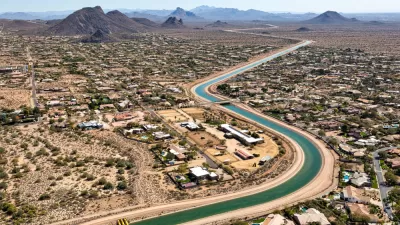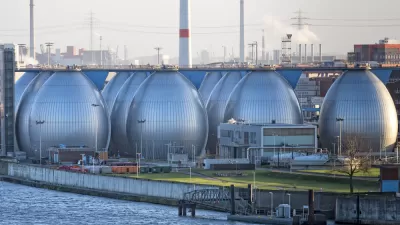With California’s water supply expected to drop by 10 percent in the next two decades, Governor Newsom’s strategy calls for conservation and increased investment in water collection, storage, and desalination infrastructure.

A new plan issued by California Governor Gavin Newsom outlines a strategy for reducing the state’s water use in advance of a projected 10 percent decrease in the state’s water supply. As reported by Ian James in the Los Angeles Times, “The plan focuses on accelerating infrastructure projects, boosting conservation and upgrading the state’s water system to match the increasing pace of climate change, securing enough water for an estimated 8.4 million households.”
“Drought is a permanent fixture here in the American West and California will adapt to this new reality.” — Gov. Gavin Newsom
As stated in the plan, “Targeted state funds and focus will support local efforts to conserve, capture, recycle, and de-salt enough water to allow California communities to prosper in a hotter, drier climate.” The strategy calls for expanding water storage capacity and groundwater recharge, speeding up wastewater recycling projects and runoff capture, and investing in desalination. “The plan includes targets and timelines, such as expanding desalination of brackish groundwater to 84,000 acre-feet by 2040, and boosting the state’s capacity to capture storm water by 500,000 acre-feet by 2040. For comparison, the total annual water use of Los Angeles is nearly 500,000 acre-feet.”
In May, California’s Coastal Commission rejected a governor-backed proposal to build a desalination project in Huntington Beach, dealing a blow to Newsom’s plans to expand desalination in the state. To date, 12 seawater desalination facilities operate in the state, with three proposals for new facilities making their way through the system.
FULL STORY: With California expected to lose 10% of its water within 20 years, Newsom outlines urgent action

Alabama: Trump Terminates Settlements for Black Communities Harmed By Raw Sewage
Trump deemed the landmark civil rights agreement “illegal DEI and environmental justice policy.”

Study: Maui’s Plan to Convert Vacation Rentals to Long-Term Housing Could Cause Nearly $1 Billion Economic Loss
The plan would reduce visitor accommodation by 25% resulting in 1,900 jobs lost.

Why Should We Subsidize Public Transportation?
Many public transit agencies face financial stress due to rising costs, declining fare revenue, and declining subsidies. Transit advocates must provide a strong business case for increasing public transit funding.

Paris Bike Boom Leads to Steep Drop in Air Pollution
The French city’s air quality has improved dramatically in the past 20 years, coinciding with a growth in cycling.

Why Housing Costs More to Build in California Than in Texas
Hard costs like labor and materials combined with ‘soft’ costs such as permitting make building in the San Francisco Bay Area almost three times as costly as in Texas cities.

San Diego County Sees a Rise in Urban Coyotes
San Diego County experiences a rise in urban coyotes, as sightings become prevalent throughout its urban neighbourhoods and surrounding areas.
Urban Design for Planners 1: Software Tools
This six-course series explores essential urban design concepts using open source software and equips planners with the tools they need to participate fully in the urban design process.
Planning for Universal Design
Learn the tools for implementing Universal Design in planning regulations.
Smith Gee Studio
Alamo Area Metropolitan Planning Organization
City of Santa Clarita
Institute for Housing and Urban Development Studies (IHS)
City of Grandview
Harvard GSD Executive Education
Toledo-Lucas County Plan Commissions
Salt Lake City
NYU Wagner Graduate School of Public Service





























